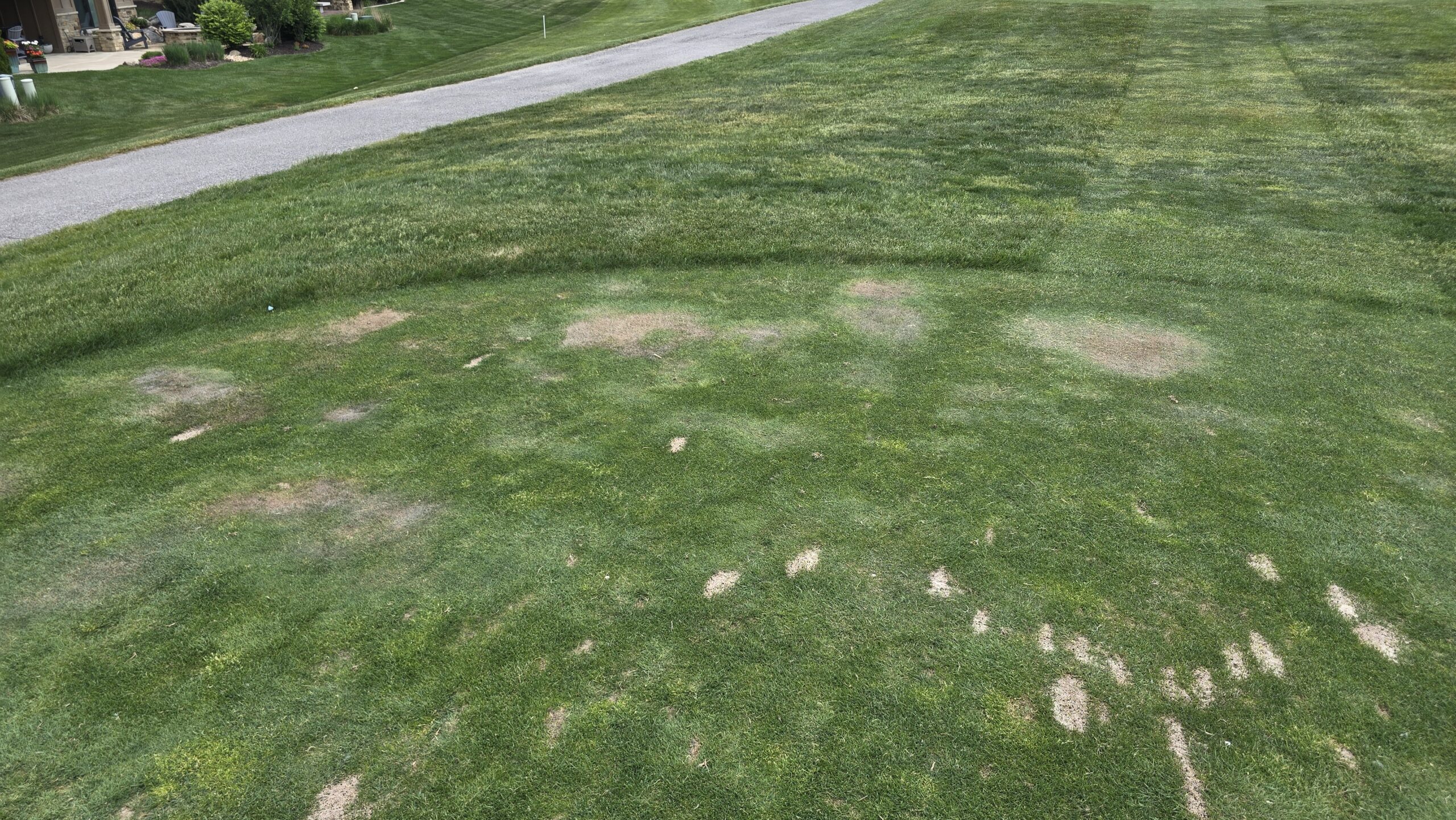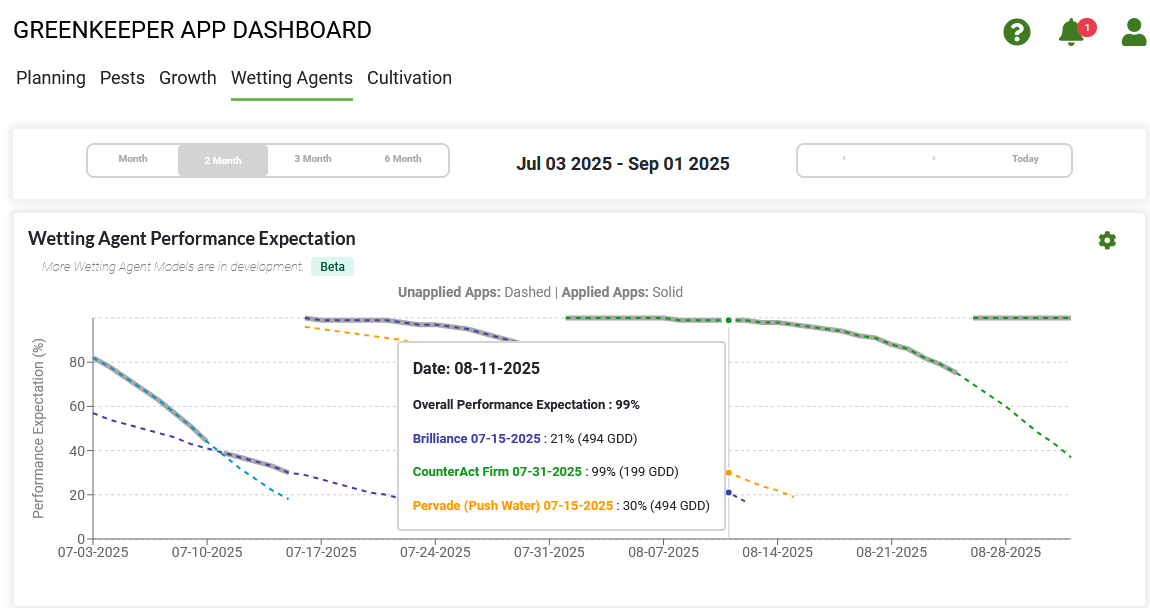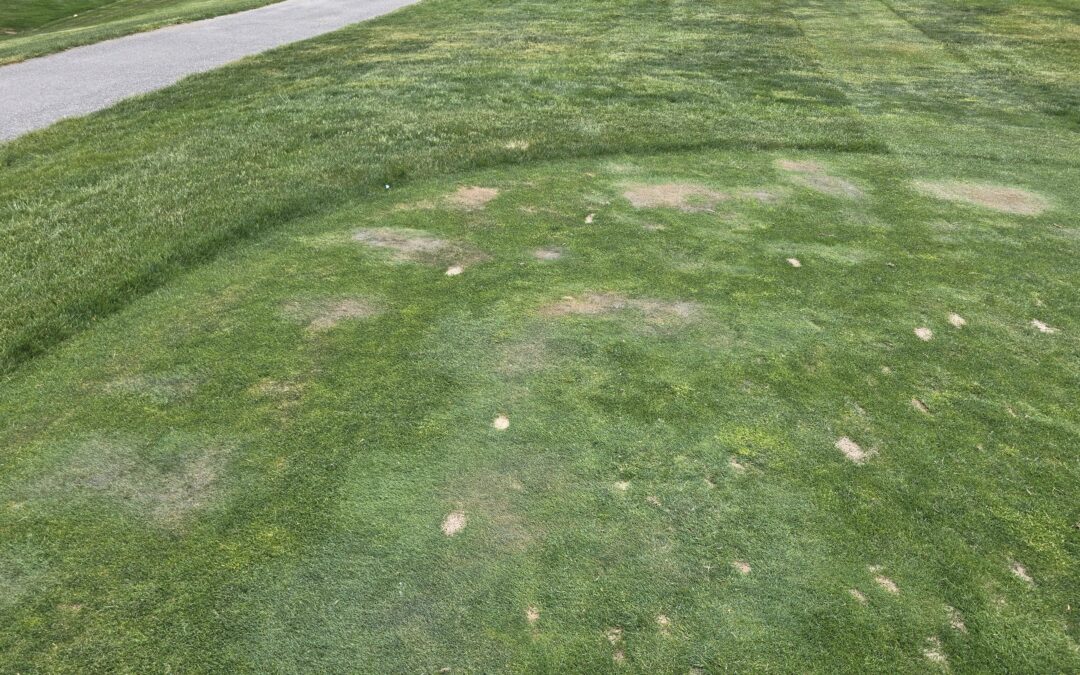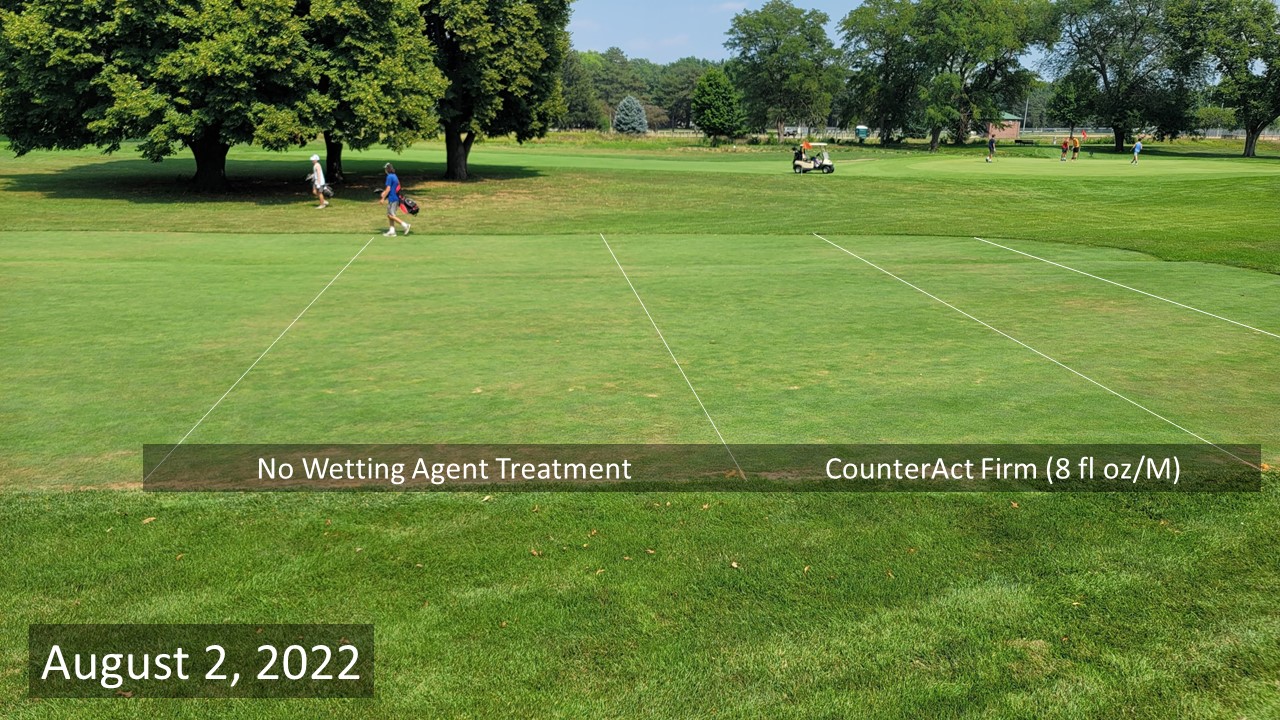Most turf managers use soil surfactants – frequently called wetting agents – to improve soil water uniformity and increase irrigation efficiency on sand-based root zones. These types of soils can quickly develop issues of hydrophobicity where organic coatings of complex sugars, waxes, and other root exudates can physically prevent water infiltration. The result, wet areas get wetter during irrigation as dry spots head towards collapse. But what about non-sand soils? Do native soils with higher concentrations of silt and clay-sized particles benefit from wetting agent applications? In our recent research, the answer is clearly yes – especially if there is bentgrass present.
What’s up with creeping bentgrass?
Like other cool-season grass species, creeping bentgrass tends to use water – via transpiration – at a pretty high rate until the soil cannot satisfy plant demand – the wilt point. This means cool-season grasses look pretty good until they abruptly start to wilt. It it’s difficult to detect wilt more than a few hours in the future, and drought symptoms can be catch a superintendent by surprise. Warm-season grasses, by contrast, have a more efficient photosynthetic system that allows them to slow water use as soil moisture approaches the wilt point. This process saves soil water and hastens rapid wilt development.
Creeping bentgrass tends to be unique compared with other cool-season grasses used for golf and sports turf. Anyone who has hand-watered a bent/Poa green knows the plight of re-wetting wilted bentgrass. It can feel impossible, and it’s frustrating to see that irrigation water runoff to wet regions. That’s were wetting agents are cruical to aid re-wetting soils.
What’s going on with the bentgrass? Why is it more difficult to re-wet dry bentgrass versus other cool-season species. Current research on the soil rhizosphere is helping plant and soil researchers understand the plant-soil-water dynamics.
Plant roots exude complex molecules called plant mucilage. This material lubricates roots and helps connect plant roots and root hairs to soil particles. It aids also water movement and retention as soils dry during the afternoon. These interactions – called rhizosheaths – can easily be seen when trying to shake soil free from plant roots. While this mucilage is great to aid water movement when it’s adaquate, it can become difficulty to re-wet after the soil becomes dry.
Creeping bentgrass likely produces higher amounts of mucilage and creates more rhizosheaths than other cool-season grass species. Some researchers in non-turf systems have hypothesized that this trait can also be advantageous because it prevents from germinating/establishing around the wilt-stricken plants.
While plant mucilage and rhizosheath development will continue to be an areas of active research in the turf industry, our wetting agent research clearly shows the benefits of wetting agent applications on creeping bentgrass fairways. The results became most noticeable as the soil starts to dry-down. Bentgrass growing on the native silty clay-loam soil had a more uniform appearance that did not develop a “puffy and thatchy/scalped” appearance when treated with a wetting agent (CounterAct Firm – 7 fl oz/1000 sqft).
I would also recommend regular soil wetting applications to other grass species that have significant bentgrass contamination such as Kentucky bluegrass or perennial ryegrass tees, approaches and fairways. These applications will help prevent unsightly localized dry spot on the bentgrass during drought stress.

Predict Wetting Agent Degradation with GreenKeeper
The team at GreenKeeper has been actively developing new wetting agent models with the support generous support several wetting agent manufacturers. These one-of-a-kind models use environmental data to predict when wetting agent performance starts to decline. This information is crucial when trying to precisely schedule wetting agent application timing. For example, golf course superintendents in Phoenix, AZ can expect an application of CounterAct Firm wetting agent to persist for several months in the winter but only two or three weeks during summer heat.
GreenKeeper now includes wetting agent models for Brillance, CounterAct Firm, CounterAct Retain, Purvade, Rely III, Revolution, and TriCure AD on the Wetting Agent View of Program Builder. Schedule an application with one of these wetting agents and see how long they’ll last in your climate.
Read More: Programming Wetting Agents in GreenKeeper






